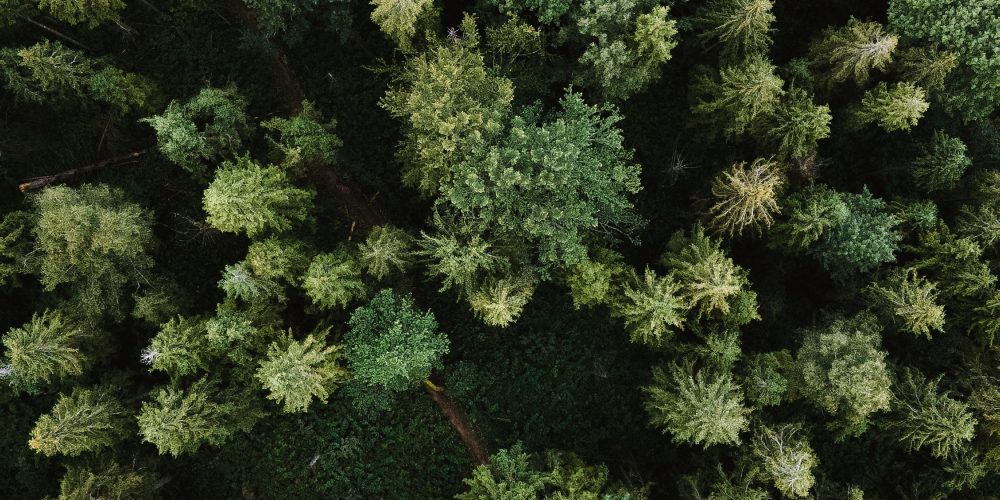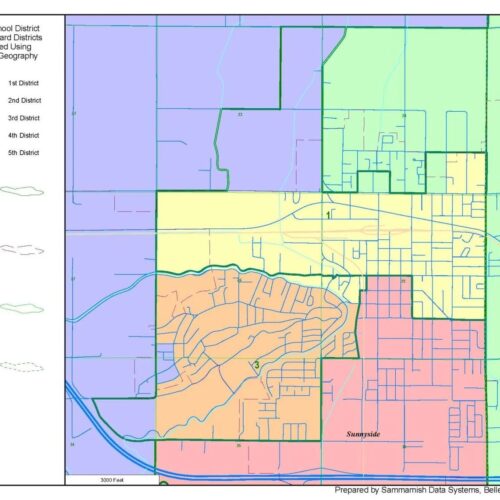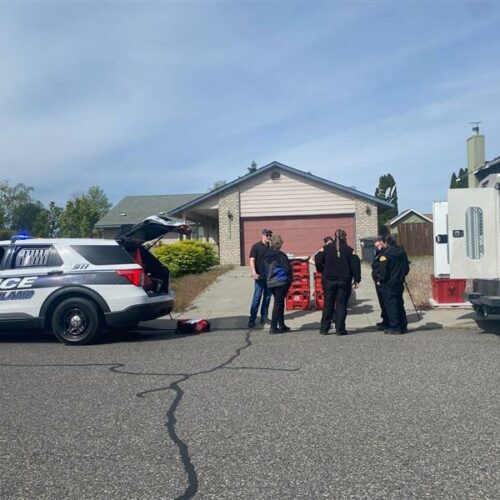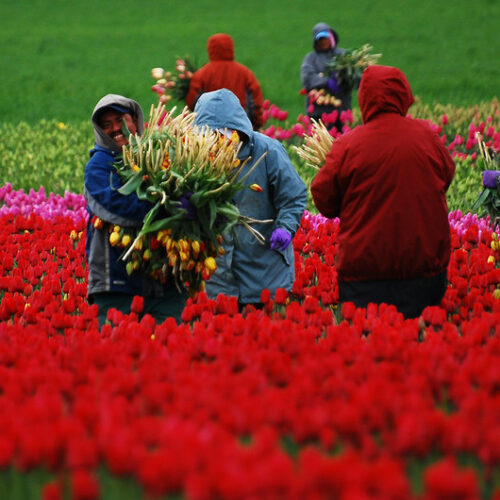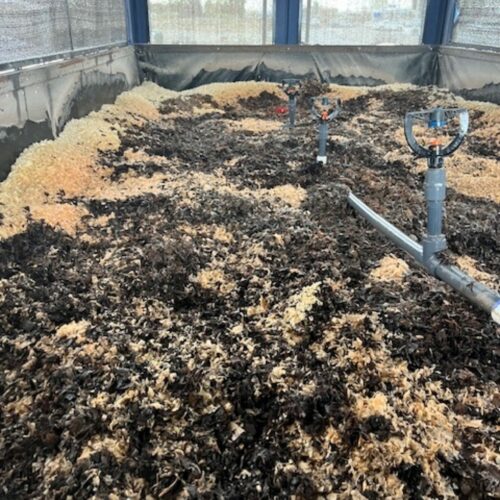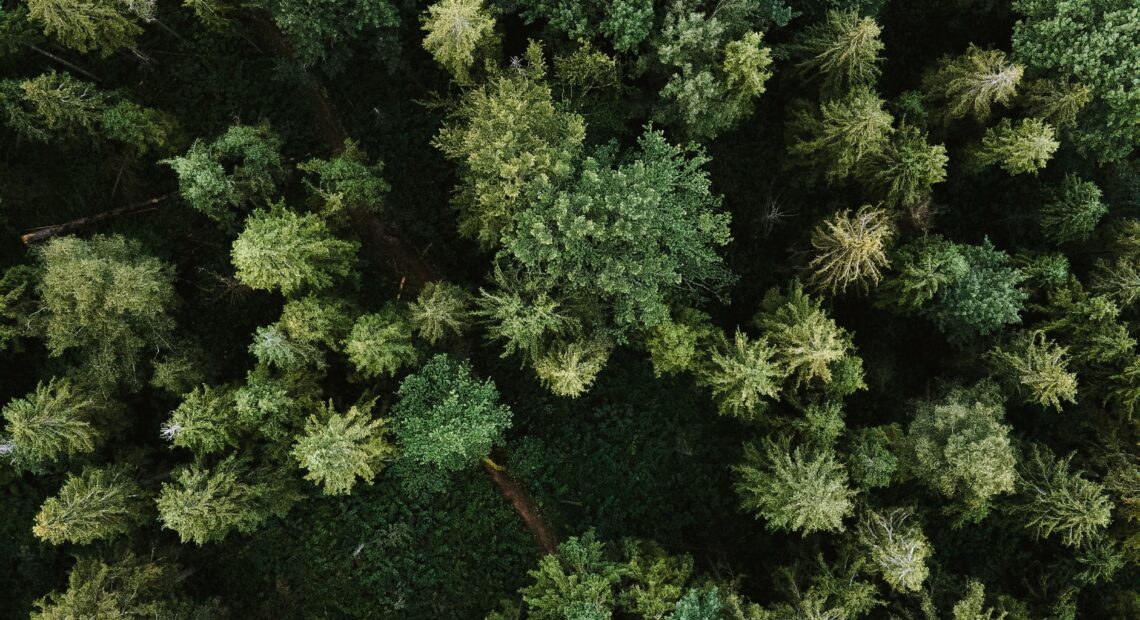
The Fight For Legacy Forests – Part 3: The Supreme Court Case
Listen
In Part Three of her series on “The Fight For Legacy Forests”, NWPB’s Lauren Gallup looks at court challenges to the basis mission of DNR’s stewardship of state forests / Runtime – 7:07
Read
The third in NWPB’s series on “The Fight for Legacy Forests”
Deciding whether to log older forests or instead conserve them is being asked of Washington’s Department of Natural Resources right now in a number of ways.
One argument, that the DNR should manage their trust lands differently, is being made in the state’s highest court.
As we’ve discussed in earlier stories in this series “The Fight for Legacy Forests,” the DNR manages the state’s trust lands.
Washington’s constitution lays out how the state would do this. Section one of article xvi of the constitution begins with the sentence “All the public lands granted to the state are held in trust for all the people…” The sentence goes on, but that first half, saying the lands must be held “for all the people,” is currently up for interpretation.
The DNR, with oversight from the Board of Natural Resources, interprets the constitution to entrust them with managing the state’s trust lands primarily for the lands’ beneficiaries, including K-12 schools, universities,and junior taxing districts.
According to the DNR’s website, they manage 3 million acres of trust lands, which, “are managed to produce non-tax revenue for specific beneficiaries.” The largest share of this land is for the K-12 Common School trust, 1.8 million acres. That’s a point that’s going to be pertinent later.
So, some of the land that DNR manages gets put up for auction for timber sales — the state and timber company granted the right to harvest, follow forestry practices and the revenue goes to the trust beneficiaries.
But some say this is an inaccurate interpretation of the constitution, and they feel so strongly about it, that they’re suing the DNR. The case is currently being decided in the state supreme court, and the plaintiffs, a handful of environmental groups across the state, argue the state needs to diversify its management of these lands for benefits for all, such as carbon absorption, recreation, tribal rights, and more.
Rachel Baker is the forest program director for the Washington Environmental Council, one of the plaintiffs in the suit.
She says the lawsuit is fundamentally about the DNR’s authority and responsibility in managing state trust lands.
When Washington became a state in 1889, Baker explains, the federal government, through the enabling act, granted land to support the state. Of these public lands, about 2.2 million acres are forested.
“The constitution says, ‘all the public lands granted to the state are held in trust for all the people.’ Our lawsuit is focused on that phrase, I just read from the constitution, and what it means,” Baker says.
The plaintiffs for the case are the Washington Environmental Council, Conservation Northwest, Olympic Forest Coalition, and eight affected individuals from across the state.
Kenny Ocker, spokesperson for the DNR, said in an email – “Washington courts have consistently held that the 1889 Omnibus Enabling Act, Washington Constitution Article XVI, and statutes created a trust for the designated beneficiaries for the federally granted lands, and the Legislature created a trust for the counties in statute.”
Ocker explained that because there have been no changes to the state’s governing laws, “the State must manage the trust lands in the best interests of the beneficiaries.”
Oral arguments were heard in front of the state supreme court this past October, and the plaintiffs are expecting a decision any day now.
Baker says they argued, “The phrase ‘all the public lands grants in the state are held in trust for all the people’ means that our state, trust forest lands should be managed for all the people of Washington, and for a range of benefits, both monetary and non monetary.”
Right now, Baker says the DNR is interpreting the constitution to require them to manage the lands to maximize revenue for the trust beneficiaries. It’s this interpretation that led the DNR to accept a conservation strategy for the marbled murrelet seabird in 2019 that would actually result in less of the species over time on managed lands — something we’ll get into in later stories on this series.
Remember the 1.8 million acres that is set aside for the Common School Trust? The land is meant to generate revenue for school construction. Well, this lawsuit comes at a time when the revenue from this trust is fractional in supporting school construction, according to Washington’s superintendent of public instruction, Chris Reykdahl, something NWPB covered earlier this year. Reykdahl has said we must move away from this idea that schools need timber revenue to be built.
Baker says their interpretation asks for a more flexible conversation about benefits from these lands for the people of Washington, including revenue and ecological and social benefits.
They’re arguing that there are benefits beyond revenue from these lands that all people of Washington should be receiving.
The DNR has always interpreted the constitution in this way, and thus managed the trust lands this way, so why now?
Well, remember the 2019 marbled murrelet conservation strategy? That, and the Sustainable Harvest Calculation, were approved by the Board of Natural Resources at the end of 2019. These approvals led to a different lawsuit, by some Washington counties and the American Forest Resource Council, calling for there to be more logging and timber harvest by the DNR.
“In response, we then filed a complaint, a lawsuit, calling into question this interpretation of all the people. Because there was an active issue and an active question open about what actually is DNR’s mandate and responsibility with regards to the trust lands, but in those two particular plans?” Baker says.
Nick Smith of the American Forest Resource Council couldn’t comment on their lawsuit, as he says it is pending while they await a decision on the supreme court case. Smith says the council sees the case as a direct attack on the state’s obligation to manage trust lands for public institutions, the defined beneficiaries.
“When it comes to the question of ‘We the people’ and, you know, who this trust mandate benefits, we believe that it benefits everybody in Washington state, because not only does it provide timber to support our forest economy, but it also sustains public services and public school construction, and other benefits that that, that support people throughout the state,” Smith says.
When asked to respond to Superintendent Reykdahl’s comments that funding for K-12 school construction should not rely on timber harvest, as the overall funding for this has declined, Smith said that revenue from the state trust lands are “very important” even if they are not a significant portion of the funding for school construction.
“If you do talk to rural school districts and a lot of school districts, they would rather have that funding to maintain their facilities, to build new facilities, than not to have that revenue,” Smith says.
A similar lawsuit is being decided in Oregon, with counties arguing the state needed permission to reduce logging on forestlands donated by counties, the Capital Press reported in February.
Beyond that earlier lawsuit, Baker says there’s a bigger rationale for bringing this question to the highest court in the state now.
“As we as a society deal with, you know, a climate crisis, and a biodiversity crisis, and many other challenges as a state that that relate to our natural resources, say, wildfires, it’s become increasingly clear that we need to manage our public resources for multiple benefits, and that we need to shift the way we think about natural resource management for this, this new reality of climate change,” Baker says.
Baker says the state’s public lands are a great place to look at where we can sequester carbon, manage wildfires and protect endangered species.
I’m Lauren Gallup, join us next time to understand more about the marbled murrelet conservation strategy, and why it may have been the impetus for the recent release of some older forests for timber harvest.
Related Stories:
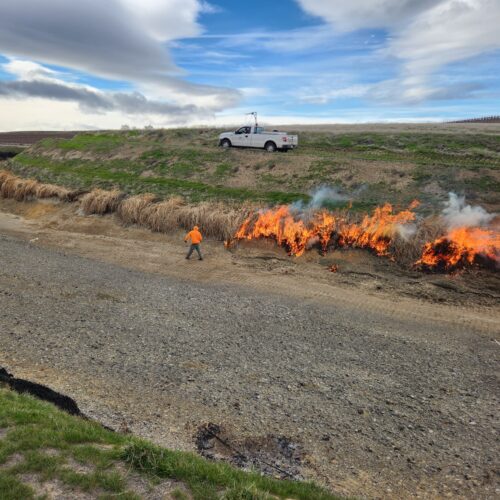
As the Northwest turns toward Spring, agricultural irrigators, fire managers and water experts watch the sky
Workers clear canals of debris in preparation for spring irrigation season in the Roza Irrigation District. (Courtesy: Dave Rollinger) Listen (Runtime 1:00) Read A story in plot points: a federal… Continue Reading As the Northwest turns toward Spring, agricultural irrigators, fire managers and water experts watch the sky
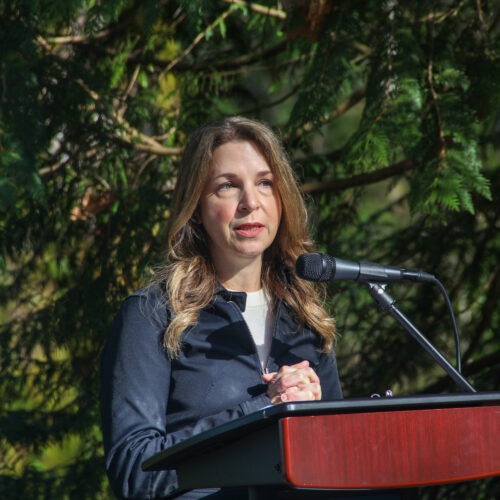
The Fight For Legacy Forests, Part Eight: What Next? A Look At The DNR’s New Carbon Project
In the last of our series, The Fight for Legacy Forests, NWPB’s Lauren Gallup reports on reactions to the carbon project on state lands, which will protect some older forests from harvest. Continue Reading The Fight For Legacy Forests, Part Eight: What Next? A Look At The DNR’s New Carbon Project
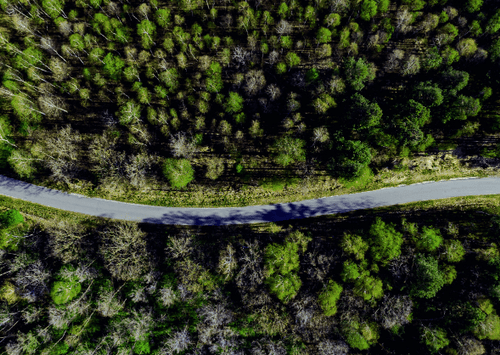
The Fight For Legacy Forests, Part Five: How Older Trees Are Defined, And How That Could Impact Timber Harvests
NWPB’s Lauren Gallup continues her series “The Fight for Legacy Forests” with reporting on an environmental nonprofit suing the Department of Natural Resources over six timber sales. Continue Reading The Fight For Legacy Forests, Part Five: How Older Trees Are Defined, And How That Could Impact Timber Harvests

